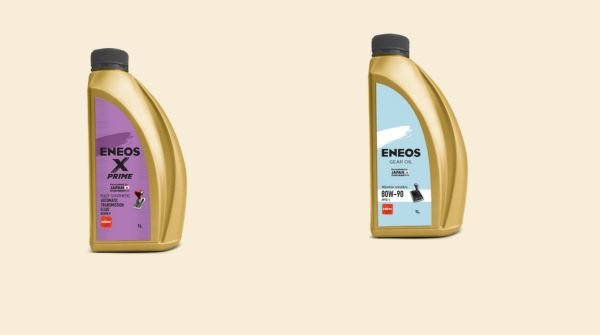Despite belonging to the category of lubricants, there lie multiple key differences between the types of transmission fluid. The wrong usage is often responsible for issues with the gearbox, subsequently further skyrocketing your expenses. However, knowing the dissimilarity helps avoid interchanged usage of the two, preventing mechanical damage to the vehicle in the long run.
If you are among the individuals who lack the basic information, let’s end the knowledge gap right now. Scroll down to educate yourself and make the appropriate decision when you fuel up your vehicle next time.
Understanding Gear Oil and Automatic Transmission Fluid
Beginning with answering if the two are the same or not, no, they are not. While both are lubricants, gear oil is used for manual transmission vehicles, and the latter is used for automatic vehicle transmission. They differ in chemical composition as well. Further, the transmission fluid is red in colour, while the gear oil is green.
Gear Oil: The lubricant is suitable for a manual transmission system comprising two shafts and gears. These systems lead to the generation of high friction and, hence heat, which subsequently results in wear and tear of the different components. Thus, the gear oil serves the main purpose of decreasing heavy friction, heat, and force generated during work.
Automatic Transmission Fluid: As the name suggests, it is used for automatic transmission. It is also referred to as hydraulic fluid. Vehicles relying on ATF have more moving parts with the functionality of automatic gear change. Here, transmission fluid is used to transfer the power across the clutches of oil pumps.
Properties of Gear Oil
Gear oil is expected to have the following characteristics to serve the function well:
Viscosity
The viscosity is responsible for exhibiting resistance to thickening at low temperatures and thinning at high temperatures. An ideal gear oil is one with high viscosity.
Heat and Pressure Resistance
Besides high temperatures, heavy-duty vehicles also witness a high amount of pressure during operation. An ideal gear oil will remain stable at heat and pressure generated due to friction and operation. The resistance here represents the inability of oil to break down or degrade upon witnessing high temperatures and pressure.
Demulsification
The gear oil is required to provide immunity to the system by demulsification of the contaminant. The contaminant of concern here is water. The gear oil must easily be removed to avoid rusting.
Properties of Automatic Transmission Fluid
The automatic transmission fluid should exhibit the following characteristics:
Viscosity
Low viscosity is essential to aid fluid in reaching each of the multiple moving parts in automatic transmission systems of heavy-duty vehicles. Hence, low viscosity with hydraulic oil-like properties is expected in ATF.
Heat and Pressure Resistance
The presence of friction remains the same in all the vehicles. Hence, similar to gear oil, the ATF is also expected to resist both high heat and pressure.
Additives
The ATF also contains additives like detergents and anti-foaming agents. The detergents prevent the buildup of deposits in channels, and anti-foaming agents prevent the mixing of fuel & air, which can lead to foam formation.
Importance of Transmission Fluid
Both oils come under the category of transmission fluid. They serve multiple functions, such as:
- Lowers the temperature during transmission
- Optimises engine efficiency and prevents other issues during transmission
- Seals condition gaskets by joining the two surfaces
- Offer protection to metal surfaces from wear
- Increases rotational speed
- Prevents the buildup of contaminants, oxidation and rust
Summary Table
Here is a summarised version of what we discussed about the difference between the two types of lubricants:
| Parameter | Gear Oil | Automatic Transmission Fluid |
| Colour | Green | Red |
| Used in | Manual transmission systems | Automatic transmission systems |
| Viscosity | High viscosity | Low viscosity |
| Heat resistance | High stability | Good heat resistance |
| Pressure resistance | Varies as per the vehicle | Good pressure resistance |
| Detergent | Not required | Required |
| Anit-foam agent | Not required | Required |
Conclusion
While gear oil and automatic transmission fluid are lubricants, they are suited for different transmission systems and have differing chemical compositions. While gear oil suits manual transmission, the ATF serves automatic transmission systems. The difference in the number of moving parts of the two systems further influences the required physical properties and constituting components. It’s recommended to know your system rather than randomly choosing between the two.
FAQs
Q1. What if I interchangeably use these two oils in my vehicles?
Interchangeably using these two oils will be harmful in the long run as the difference in viscosity and other properties will hinder the optimum functionality of the vehicle.
Q2. How do I know if I need to fill up the transmission fluid?
The fill-up is required for a low quantity of transmission fluid. It can be identified through the signs like occurrence of unusual noises, overheating, delay in shifting and slipping in gears. Modern vehicles may also be equipped with warning lights for identification.
Q3. What components may be harmed due to low transmission fluid?
The wear and tear of the gear and clutch, sticking of the valve body and wear of the torque converter are some common possible damages.





